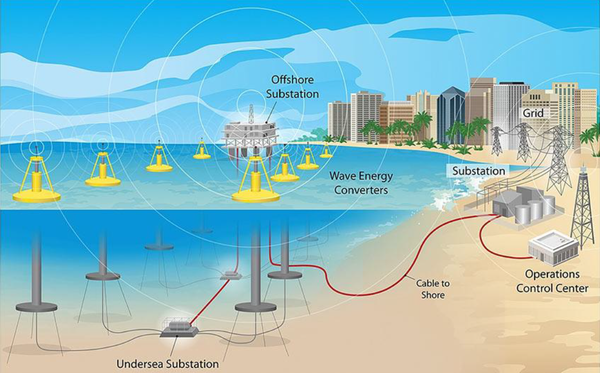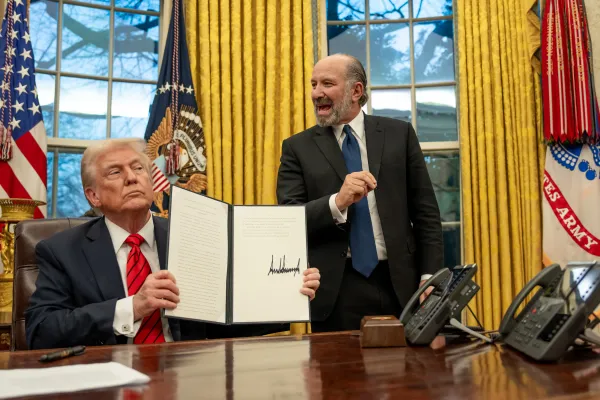What I’m reading: Tracking Trump's climate rollbacks, NYC congestion pricing, building back better in LA, and more

Quitting Carbon is a 100% subscriber-funded publication. To support my work, please consider becoming a paid subscriber or making a one-time donation.
Ahead of your weekend, here is another roundup of highlights from some of what I've been reading – and watching. Enjoy!
Tracking Trump 2.0 climate rollbacks: The Trump administration has already initiated its promised rollback of Joe Biden’s climate regulations. Sean Duffy’s first act after being sworn in Tuesday as secretary of the Department of Transportation was signing a memorandum directing staff at the National Highway Traffic Safety Administration “at the earliest opportunity to propose the rescission or replacement of any fuel economy standards as determined necessary to bring the CAFE [Corporate Average Fuel Economy] program into compliance with Administration policy and the requirements of the law.”
For the grim but vital task of tracking the Trump administration's efforts to weaken energy and climate regulations, you can bookmark these helpful resources. On Inauguration Day, the Sabin Center for Climate Change Law at Columbia Law School launched its Climate Backtracker to identify “steps taken by the Trump-Vance administration to scale back or wholly eliminate federal climate mitigation and adaptation measures.” The Harvard Law School Environmental & Energy Law Program recently launched a Rollback Resources page with “resources on the legal and practical implications of the Trump administration's environmental and energy rollback efforts.”
NYC’s congestion pricing is working: The scheme has been online for less than a month, but New York City’s congestion pricing is working just as its designers intended. Under the program, passenger vehicles are charged $9, and trucks and buses charged up to $21.60, to enter Manhattan south of 60th Street during peak periods. New York City estimates the congestion charge will bring in $500 million in its first year.
“New York's congestion pricing has led to 1 million total fewer vehicles entering the busiest part of Manhattan and cut commuting times since the program began on Jan. 5. … The Metropolitan Transportation Authority said inbound trips times on all Hudson and East River crossings are now 10% to 30% faster or more, while bus service has also improved. Subway ridership has grown by 7.3% on weekdays and 12% on weekends over January 2024,” Reuters’ David Shepardson reported this week.
Alas, the program may not survive. New Jersey Governor Phil Murphy (D) has already asked President Trump to reexamine the Biden administration’s approval of the program. And, according to a New York Times story published yesterday, “the Trump administration is considering a move to halt New York City’s congestion pricing program.”
Caltrain’s electrification wins continue: I noted in a previous roundup that electrification of the Caltrain railway in the San Francisco Bay Area had already succeeded in boosting ridership. According to updated data released by Caltrain this week, the ridership surge continues: “The first three months of electric service saw a 41% in ridership over the same three months in 2023, with Sunday ridership doubling.”
It turns out that the quieter, cleaner, faster, and more frequent electric train service is cheaper to operate, too. Caltrain said last week that the regenerative braking systems on the new trains are generating and sending back to the grid 23% of the electricity used by the trains – outperforming original projections. As a result, Caltrain estimates that it will spend $3 million less annually for the electricity to run its trains. Add to this $6 million in annual energy credits Caltrain will receive from California’s Low Carbon Fuel Standard program, and “the first year of electric service will have lower fuel costs than the previous diesel service.”
Floating solar power and U.S. reservoirs: According to a study from the National Renewable Energy Laboratory (NREL), reservoirs controlled by the federal government could host enough floating solar panels to generate up to 1,476 terawatt-hours per year – enough electricity to power approximately 100 million homes. “That’s a technical potential,” NREL geospatial scientist Evan Rosenlieb said in a press release. “We know we’re not going to be able to develop all of this. But even if you could develop 10% of what we identified, that would go a long way.”
Reservoirs that already host hydropower-generating facilities could also do double duty and be ideal locations for floating solar power plants. “A hybrid energy system that relies on both solar energy and hydropower could provide more reliable and resilient energy to the power grid. If, for example, a drought depletes a hydropower facility’s reservoir, solar panels could generate energy while the facility pauses to allow the water to replenish,” according to NREL.
Building back better in LA: Tragically, dozens of lives and thousands of homes and other structures were lost when the Palisades and Eaton fires swept through Greater Los Angeles this month. There is an obligation – and moral duty – in the aftermath to rebuild neighborhoods quickly but in a way that does not add to the climate pollution that helped to make the fires so destructive and deadly.
“Greater Los Angeles’ burned neighborhoods are already revealing a looming natural gas crisis, decades before most American cities will face it,” historian and energy-systems analyst Joshua Lappen writes in an essay published earlier this month at Heatmap. That crisis is the collapse of natural gas distribution networks as customers electrify their homes or businesses – a critical step towards decarbonization – leaving fewer gas customers to shoulder the cost of maintaining and operating the system that remains.
Lappen’s answer? “Act proactively. Prune back the branching gas pipeline network to protect both the system as a whole and the burned neighborhoods themselves. Local government, state regulators, and our gas and electric utilities can together support the transition of burned neighborhoods’ remaining buildings off of gas so that entire branches of the system can be shut off, leaving safer and cleaner all-electric neighborhoods in their place.”
But, in their well-intentioned desire to get families back in new homes as soon as possible, some of California’s most powerful politicians have proposed suspending rules and standards ensuring that rebuilt homes are safer, more resilient, and less polluting, the Los Angeles Times’ Sammy Roth reports in a column published this week.
Los Angeles Mayor Karen Bass (D) suspended a city requirement that new construction be all-electric. Governor Gavin Newsom (D) issued an executive order directing state officials to report back to him within 60 days on whether any provisions of the building code should be suspended for rebuilding efforts. And Assembly Speaker Robert Rivas (D) proposed legislation (AB 306) that would block most building code updates until 2031 – statewide, not just in burn zones.
“Lawmakers shouldn’t use the fires as an excuse to slow down on clean energy – not when scientists say humanity must slash emissions much faster to keep the climate crisis from getting worse, and not when the climate crisis is a significant reason we’re seeing these catastrophic fires in the first place,” writes Roth. “The burden of confronting global warming can’t and shouldn’t fall on fire victims alone. But building new homes without gas hookups should be a relatively easy lift. Especially for California. Especially for Los Angeles.”
Bonus (what I’m watching): The joy of discovery with the “30 for 30” backlist: I’m a big sports fan, especially of Major League Baseball (go Padres!). I’m also fan of long-form storytelling. So, I shouldn’t be surprised at how much I’m enjoying working my way through the first season of ESPN’s long-running 30 for 30 documentary film series. My father-in-law introduced me to the series – if you’re reading, thank you, Jim! The films are so well done, and so compelling, that the topic almost doesn’t matter.
Who knew I’d be so engrossed watching trash-talking NBA legend Reggie Miller spar with Spike Lee and other Knicks fans, discovering how deeply drug lord (and murderous psychopath) Pablo Escobar was involved with soccer in Colombia, and learning about how a group of nerdy journalists and editors invented Rotisserie baseball and birthed the multi-billion-dollar fantasy sports industry?




